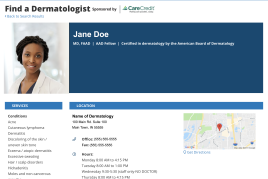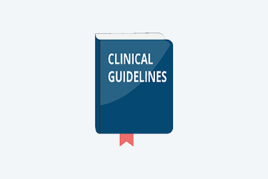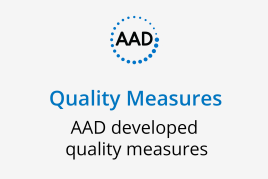Working up pernio: How far should you dip your toe in the water?

By David A. Wetter, MD
May 6, 2020
Vol. 2, No. 18

Dermatologists are rapidly becoming reacquainted with pernio (chilblains), given the increasing reports of pernio-like acral eruptions (and other dermatologic manifestations) occurring in association with COVID-19. (1, 2) This raises an important clinical question: under normal (non-COVID-19) circumstances, what is (or should be) the proper workup (if any) for patients who present to the dermatology office with skin findings suggestive of pernio?
To try and answer this question, I reflected upon a patient I encountered during my dermatology residency. She was an otherwise healthy woman in her forties who presented acutely with painful, red-to-purple patches on her fingers. Since I was unable to provide a definitive diagnosis based upon her physical examination findings, I performed a skin biopsy. When I received the dermatopathology report “consistent with pernio,” I immediately wondered, “Why did I overlook this diagnosis?” After reviewing the literature for potential causes of pernio, I ordered a panoply of tests including: complete blood count, peripheral blood smear, monoclonal gammopathy screen, cryoglobulins, antinuclear antibodies, extractable nuclear antigen antibodies, rheumatoid factor, antiphospholipid antibodies, cold agglutinins, and hepatitis B and C serology. Fortunately (and not surprisingly in retrospect), the results of my extensive (and expensive) test panel were normal. Was any portion of my laboratory workup necessary for this patient?
In an insightful editorial, Simon Barton opined: “Chilblains are a common self-limiting disorder, managed by most GPs every winter in a 10-minute consultation. In secondary care the same condition warrants blood tests, a skin biopsy, presumably multiple consultations, and a fancy name. Are GPs under-investigating? Or are secondary care doctors over-investigating?” (3)

Now years post-residency, the “proper” workup of pernio continued to baffle me, prompting Jon Cappel, MD, (then a dermatology resident) and I to retrospectively review our Mayo Clinic experience of pernio (4) to attempt to unravel this conundrum.
This study analyzed 104 patients (mean age at diagnosis, 38.3 years; 79% women) with a clinical diagnosis of pernio. (Patients with chilblains lupus [a subtype of chronic cutaneous lupus] were excluded from the analysis.) Although 38 patients (37%) had at least 1 abnormal laboratory test result, oftentimes the results were nonspecific and unassociated with the presence of a concerning or associated systemic disease. Specifically, only 7 patients (6.7%) had a (possibly) associated hematologic or rheumatologic (non-lupus) disease: rheumatoid arthritis (2 patients), Sjögren syndrome (1), undifferentiated connective tissue disease (1), myelodysplastic syndrome (1), multiple myeloma (1), and aplastic anemia (1). Cold agglutinins were found in 11 of 20 tested patients, but were of unclear clinical significance. Only 2 (of 34 tested) patients had weakly positive antiphospholipid antibodies (without clinical features of thrombosis or rheumatologic disease) and all patients (of 53 tested) had negative cryoglobulins. A limitation of the study was that laboratory testing was not standardized among the patient cohort.
In order to provide clinical guidance we used our study data to create proposed diagnostic criteria for pernio. (4) These consist of one major criterion (localized erythema and swelling involving acral sites and persistent for >24 hours) and three minor criteria ([a] onset and/or worsening in cooler months [between November and March]; [b] histopathologic findings of skin biopsy consistent with pernio and without findings of lupus erythematosus; and [c] response to conservative treatments [i.e. warming and drying of affected areas]). A diagnosis of pernio requires the major criterion and at least one of the minor criteria.
Given a potential practice gap between this study’s data and tests ordered during routine clinical practice, we devised recommendations for evaluating patients with pernio (Table 8 of cited reference): (4)
Review of systems for associated systemic conditions (such as autoimmune connective tissue disease and malignant disease)
Skin examination of unaffected areas to assess for cutaneous findings of lupus
In patients who do not meet proposed diagnostic criteria of pernio, consider skin biopsy to exclude other causes of acral erythema (e.g. lupus, cryoglobulinemia, vasculitis, and cutaneous thrombosis)
In patients with review of systems or other physical examination findings concerning for an associated systemic condition, consider the following laboratory studies: complete blood cell count, peripheral blood smear, monoclonal gammopathy screen, cold agglutinins, and antinuclear antibody. Extractable nuclear antigen antibodies, rheumatoid factor, antiphospholipid antibodies, and cryoglobulins can also be considered in selected circumstances
Skin biopsy and/or laboratory studies are not needed in patients who meet proposed diagnostic criteria of pernio and who do not have symptoms or signs concerning for an associated systemic condition
The pernio-like eruptions associated with COVID-19 are forcing us to examine which clinical scenarios (during the pandemic) should trigger our suspicion of current (or recent) infection with SARS-CoV-2. In this context, pernio-like eruptions tend to affect younger patients; (1, 2, 5) although it is unclear if it is a dermatologic marker of active (including asymptomatic) COVID-19 or if it represents a delayed immune-mediated host response to the virus characterized by the production of type I interferons. (1, 5) Further studies are needed to determine whether pernio-like eruptions associated with COVID-19 portend a better or worse prognosis for systemic complications including respiratory, coagulopathic, and neurologic (e.g. stroke) sequelae (currently published studies suggest a better prognosis). As testing for SARS-CoV-2 becomes more widespread, dermatologists may consider testing patients with pernio-like eruptions using both nasopharyngeal swab for PCR (to detect active infection) and serology testing for the presence of IgG antibodies (to detect immune response to recent infection), although specific national guidelines do not yet exist for this scenario. Hopefully in the upcoming months, studies will more closely examine SARS-CoV-2 test results (PCR and serology) in patients with pernio-like eruptions to better understand the significance of this dermatologic manifestation of COVID-19.
Additionally, our “re-examination” of pernio outside of the context of COVID-19 provides dermatologists with the opportunity to develop a targeted testing approach that can be employed now (and in future years) to help bridge the practice gap of pernio testing in non-COVID-19 patients. Indeed, I think Simon Barton was prescient when he wondered whether specialists tend to “over-investigate” pernio; (3) as the subsequent Mayo Clinic study seems to suggest this, too. (4) Although my patient from dermatology residency will not directly benefit from my belated knowledge, I hope that our dermatologic community will learn from my cautionary tale and gently “test the waters” before making a big “(laboratory test) splash” with their pernio patients!
Point to remember: Pernio is usually not associated with underlying rheumatologic or hematologic diseases (only 6.7% of patients in the Mayo Clinic study). Use of the aforementioned proposed diagnostic criteria and suggested evaluation may help to guard against “over-evaluation” of pernio by dermatologists and other specialists.
Our Editor’s Viewpoint
Warren R. Heymann, MD
Dr. Wetter offers a cogent approach to the work-up of pernio “under normal (non-COVID-19) circumstances.”
Life is not normal now. How do we advise people presenting with “COVID-19 toes”? This publication is Dermatology World Insights and Inquiries. For pernio-like lesions observed in the COVID-19 pandemic, inquiries far exceed insights. The only definitive statement that can be made is that many more people are taking a harder look at their feet than they were two months ago.
This viewpoint was written on May 1, 2020 for publication May 6. I suspect that there will be several more PubMed articles on this topic over the coming week(s).
A large series of chilblain-like lesions was reported by Piccolo et al. The authors created a Google form aimed to collect information about patients presenting with chilblains-like lesions. The document was disseminated via social media and email to hundreds of Italian dermatologists and pediatricians. Within 5 days data was collected on 63 patients with the following results [abridged for brevity]: No significant difference in gender was noticed (57.4% females vs 47.6% males). The median age was 14 years (12-16). Feet alone were mostly affected (85.7%) followed by feet/hands together (7%) and hands alone (6%). Pictures of patients were uploaded in 54 patients, with 31/54 presenting with erythematous-edematous lesions and 23/54 with blistering lesions. Pain and itch were equally observed (27% vs 27%), followed by pain/itch together shown in 20.6% of patients. Asymptomatic lesions were present in 25.4%. Median time from the onset to clinical diagnosis was 10 days (6-15). At time of diagnosis most patients presented active lesions, so it was not possible to establish the overall duration of the lesions. Most lesions (79.4%) were stable during the following days, 14.3% had a relapsing course and only 6.3% were evanescent and quickly resolved. In most cases, no other cutaneous signs were observed. As concerning extracutaneous findings, gastrointestinal symptoms were the most frequently observed (11.1%) (median duration 7 days) followed by respiratory symptoms (7.9%) and fever (4.8%) (median duration 4 days); in most cases, systemic symptoms preceded cutaneous findings. Information about COVID-19 status was available in a minority of cases: a swab was performed in 11 patients (17.5%) and was found positive in 2 cases (3.2%); serology was available in 6 cases (9.5%) and was positive in the 2 patients with a positive swab. (1)
Alramthan and Aldaraaji reported two cases with RT-PCR confirmed COVID-19 infection presenting with cutaneous lesions: A 27-year-old and 35-year-old previously healthy women with red-purple papules on the dorsal aspect of fingers bilaterally. The 35-year-old female additionally had diffused erythema in the subungual area of the right thumb. Full blood count and complete metabolic profile were normal. Chest x-rays were unremarkable. They attributed the lesions to ischemia. (6)
In a retrospective study of 132 patients with “acro-ischemic lesions” (evaluated between March 5 and April 15, 2020 in Spain) the following details were observed: The mean age was 19.9 years; 54 patients (40.9%) had close contact with a confirmed COVID-19 patient, 28 patients (21.2%) had close contact with a health worker, and 19 patients (14.4%) were clinically diagnosed with COVID-19. None of the patients had COVID-19 pneumonia or specific medication; 16 patients started with COVID-19 symptoms prior to the skin lesions, with a mean latency time of 9.2 days, and 3 patients started at the same time. The mean duration of the 44 skin lesions was 8.7 days. In 11 patients, a real-time reverse transcription polymerase chain reaction (rt-PCR) test for severe acute respiratory syndrome coronavirus 2 (SARS-CoV-2) was performed from a nasopharyngeal swab, after the onset of skin lesions. 2 patients (18.1%) were tested positive. Serological assays were not performed. The authors concluded: “There is an increasing concern about clinical implications of acute acro-ischemic lesions in asymptomatic or mildly symptomatic patients. The patients in this study did not develop COVID-19 pneumonia or any other complication. The latency time between COVID-19 symptoms and skin manifestations, and the low positive rate for nasopharyngeal swabs suggest that it represents a late manifestation of SARS-CoV-2 infection. Whether they represent a coagulation disorder or a hypersensitivity reaction is yet to be known.” (7)
According to Dr. Lindy Fox, who has been “inundated” with these lesions, “The good news is that the chilblain-like lesions usually mean you’re going to be fine…Usually it’s a good sign your body has seen Covid and is making a good immune reaction to it.” (“What is ‘Covid toe’? Maybe a Strange Sign of Coronavirus Infection” by Roni Caryn Rabin, New York Times, May 1, 2020)
As Dr. Wetter alluded to, questions about pernio-like lesions abound, including, but not limited to pathogenesis, prognosis, and treatment. Patients are concerned when they see purple toes — do they have COVID-19? (Quite possibly.) Is their family at risk? (Good chance.) Is it associated with other manifestations that they are reading about, such as strokes in younger patients? (Highly unlikely.) Should they be treated? (Consider starting with a topical steroid if symptomatic.) Dermatologists ask, should the evaluation of pernio be any different in the COVID19-positive than “standard” patients? (A minimalist approach as per Dr. Wetter seems reasonable.) As we are in the throes of amassing data, all you can possibly get now are people’s prevailing hunches and opinions. I have every confidence that in a year, we will tip the balance more toward insights than inquiries. Please utilize the AAD COVID-19 registry to help collate data that will help decipher the cutaneous riddles of the coronavirus.
As stated so eloquently by Zagurly-Orly and Schwartzstein: “We are living through an unprecedented biopsychosocial crisis; physicians must be the voice of reason and lead by example. We must reason critically and reflect on the biases that may influence our thinking processes, critically appraise evidence in deciding how to treat patients, and use anecdotal observations only to generate hypotheses for trials that can be conducted with clinical equipoise. We must act swiftly but carefully, with caution and reason.” (8)
Piccolo V, Neri I, Filippeschi C et al. Chilblain-like lesions during COVID-19 epidemic: A preliminary study on 63 patients. J Eur Acad Dermatol Venereol. 2020 Apr 24. [Epub ahead of print]
Heymann WR. The profound dermatological manifestations of COVID-19 – Cutaneous features. Dermatology World Insights and Inquiries. Vol. 2, No. 16. April 22, 2020.
Barton SR. What’s in a name? BMJ. 2011;342:d3694.
Cappel JA, Wetter DA. Clinical characteristics, etiologic associations, laboratory findings, treatment, and proposal of diagnostic criteria of pernio (chilblains) in a series of 104 patients at Mayo Clinic, 2000 to 2011. Mayo Clin Proc. 2014;89(2):207-215.
Kolivras A, Dehavay F, Delplace D et al. Coronavirus (COVID-19) infection-induced chilblains: A case report with histopathologic findings. JAAD Case Rep. 2020 (in press).doi.org/10.1016/j.jdcr.2020.04.011
Alramthan A, Aldaraji W. A case of COVID-19 presenting in clinical picture resembling chilblains disease: First report from the Middle East. Clin Exp Dermatol 2020 Apr 17. doi: 10.1111/ced.14243. [Epub ahead of print]
Fernandez-Nieto D, Jiminez-Cauhe J, Suarez-Valle A, Moreno-Arrones OM, et al. Characterization of acute acro-ischemic lesions in non-hospitalized patients: A case series of 132 patients during COVID-19 outbreak. J Am Acad Dermatol 2020 Apr 24 pii: S0190-9622(20)30709-X. doi: 10.1016/j.jaad.2020.04.093. [Epub ahead of print]
Zagurly-Orly B. Schwartzstein RM. Covid-19 – A reminder to reason. New Engl J Med 2020 Apr 28 [Epub ahead of print].
All content found on Dermatology World Insights and Inquiries, including: text, images, video, audio, or other formats, were created for informational purposes only. The content represents the opinions of the authors and should not be interpreted as the official AAD position on any topic addressed. It is not intended to be a substitute for professional medical advice, diagnosis, or treatment.
DW Insights and Inquiries archive
Explore hundreds of Dermatology World Insights and Inquiries articles by clinical area, specific condition, or medical journal source.
All content solely developed by the American Academy of Dermatology
The American Academy of Dermatology gratefully acknowledges the support from Incyte Dermatology.
 Make it easy for patients to find you.
Make it easy for patients to find you.
 Meet the new AAD
Meet the new AAD
 2022 AAD VMX
2022 AAD VMX
 AAD Learning Center
AAD Learning Center
 Need coding help?
Need coding help?
 Reduce burdens
Reduce burdens
 Clinical guidelines
Clinical guidelines
 Why use AAD measures?
Why use AAD measures?
 Latest news
Latest news
 New insights
New insights
 Combat burnout
Combat burnout
 Joining or selling a practice?
Joining or selling a practice?
 Advocacy priorities
Advocacy priorities
 Promote the specialty
Promote the specialty

